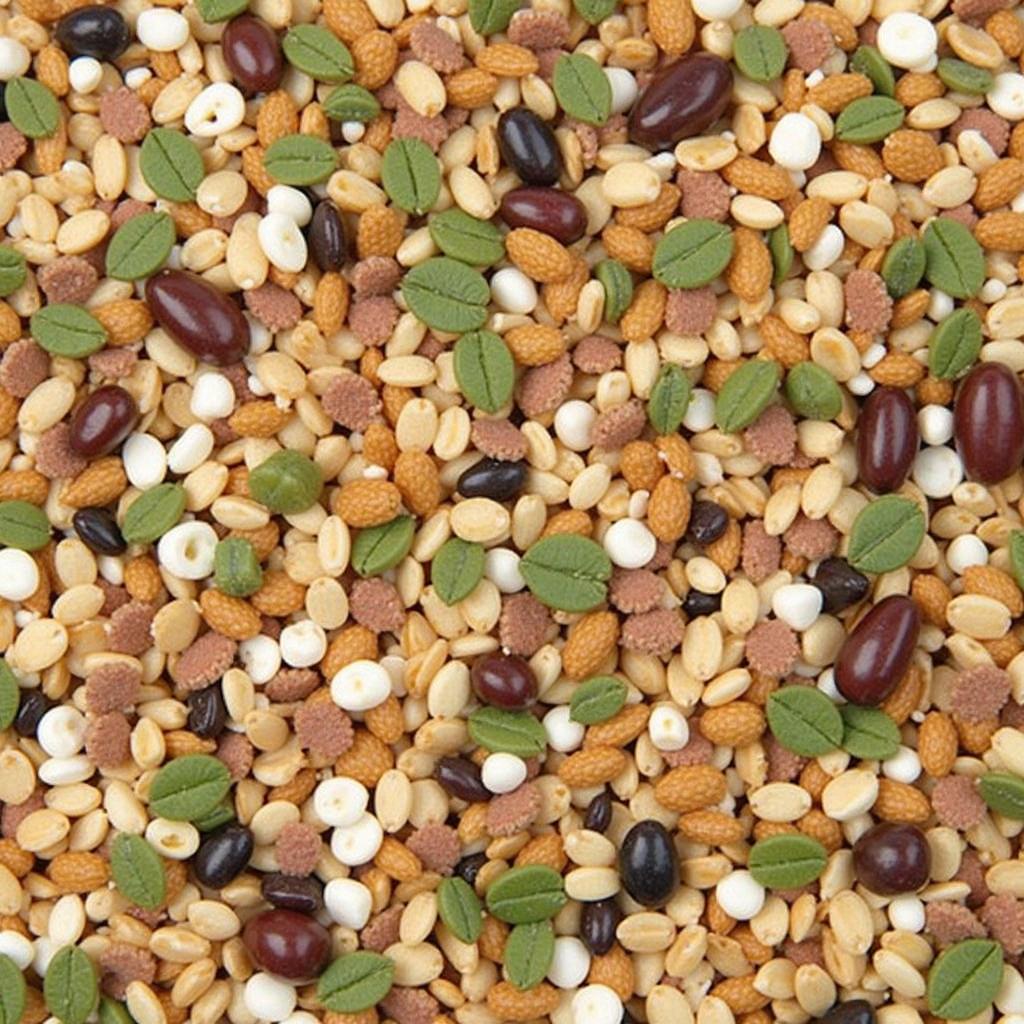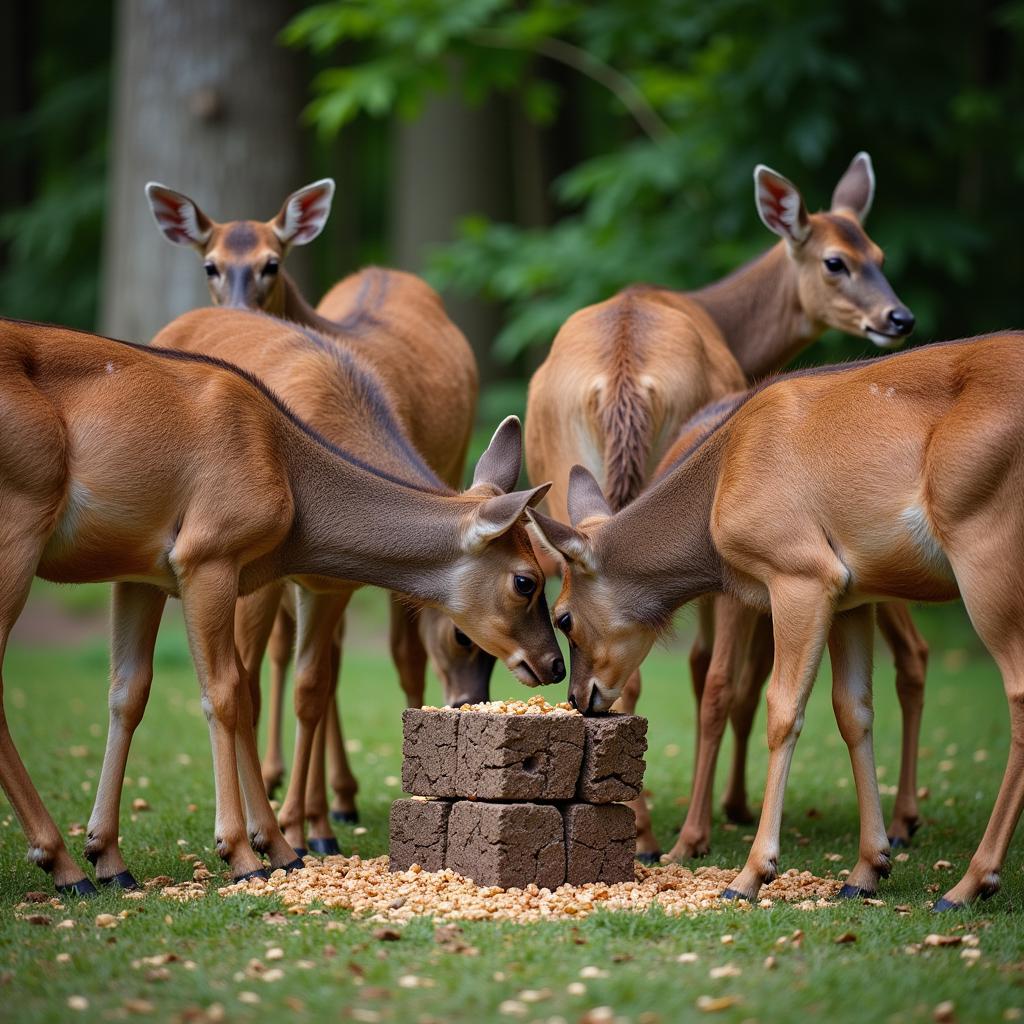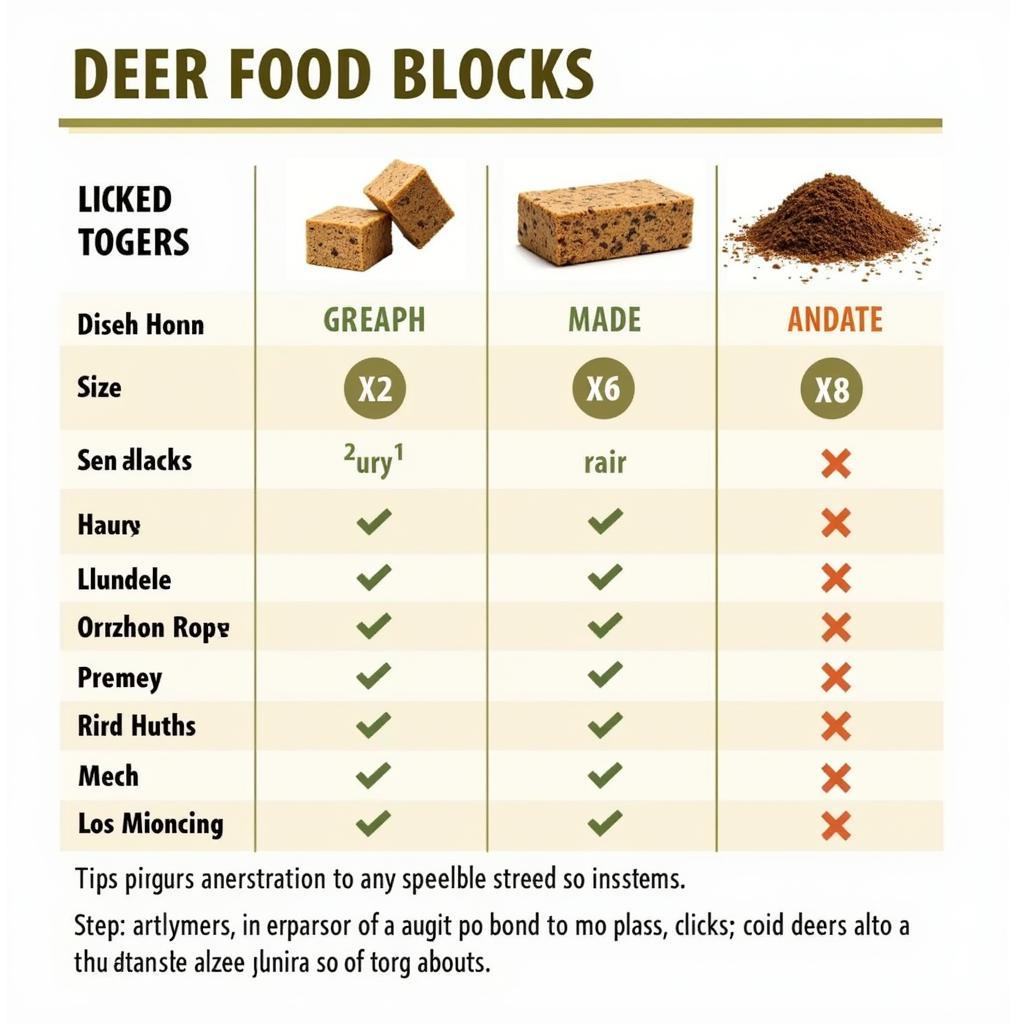Deer Food Blocks, also known as deer feed blocks or supplemental deer blocks, have become increasingly popular among wildlife enthusiasts and hunters seeking to provide additional nutrition for deer populations. But what exactly are these blocks, and how can you choose the right one for your needs?
This comprehensive guide delves into the world of deer food blocks, exploring their benefits, drawbacks, and key considerations for making informed decisions about their use.
What are Deer Food Blocks?
 Deer Food Block Composition
Deer Food Block Composition
Deer food blocks are essentially compressed blocks of supplemental feed designed to attract deer and supplement their natural diet. They are typically made from a variety of ingredients, including:
- Grains: Corn, oats, wheat, and milo provide carbohydrates for energy.
- Seeds: Soybeans, sunflower seeds, and cottonseed offer protein and fat.
- Minerals: Salt, calcium, phosphorus, and other essential minerals support antler growth, bone health, and overall physiological functions.
- Vitamins: Various vitamins are often added to enhance overall health and immune function.
- Binding Agents: Molasses, fats, and other binders hold the ingredients together in a solid block form.
The specific composition of deer food blocks can vary greatly depending on the manufacturer, target region, and intended purpose. Some blocks are formulated for specific seasons, while others cater to the nutritional needs of different deer life stages, like fawning or antler growth.
Benefits of Using Deer Food Blocks
 Deer Consuming Food Block
Deer Consuming Food Block
Deer food blocks offer several potential benefits, making them an attractive option for many:
- Supplemental Nutrition: During periods of natural food scarcity, such as harsh winters or droughts, food blocks can provide a crucial source of essential nutrients, helping deer maintain body condition and overall health.
- Improved Antler Growth: Blocks high in protein, minerals, and specific amino acids can contribute to enhanced antler development in bucks.
- Attracting Deer: Food blocks can serve as attractants, drawing deer to specific areas for observation or hunting purposes. This can be particularly beneficial for managing deer populations or improving hunting success rates.
- Convenience: Deer food blocks are generally easy to transport, store, and distribute, offering a hassle-free way to supplement deer diets.
Drawbacks and Considerations
While deer food blocks can offer advantages, it’s essential to be aware of potential drawbacks and considerations before incorporating them into your wildlife management strategy:
- Nutritional Imbalance: Overdependence on food blocks can lead to nutritional imbalances in deer if they do not consume a sufficiently diverse natural diet.
- Habituation and Dependence: Regularly providing food blocks can habituate deer to an artificial food source, potentially disrupting their natural foraging behaviors and making them reliant on human-provided sustenance.
- Disease Transmission: Congregating deer around a shared food source can increase the risk of disease transmission, especially for contagious diseases.
- Cost: Deer food blocks can be relatively expensive, especially when considering long-term and large-scale use.
Choosing the Right Deer Food Block
 Types of Deer Food Blocks
Types of Deer Food Blocks
Selecting the most appropriate deer food block depends on various factors, including:
- Nutritional Needs: Consider the specific nutritional requirements of deer in your area and choose a block that complements their natural diet.
- Seasonality: Opt for blocks formulated for specific seasons, such as high-energy blocks for winter or protein-rich blocks for antler growth during spring and summer.
- Target Species: Ensure the block is appropriate for the deer species present in your region.
- Ingredients: Carefully examine the ingredient list, prioritizing blocks with high-quality ingredients and avoiding those containing fillers or artificial additives.
- Local Regulations: Familiarize yourself with local regulations regarding deer feeding and baiting, as restrictions and guidelines may apply in your area.
Tips for Using Deer Food Blocks Responsibly
To maximize the benefits and minimize potential drawbacks, consider these tips for responsible deer food block usage:
- Supplement, Don’t Substitute: Use food blocks as a supplement to the natural food sources available, not as a replacement.
- Offer in Moderation: Avoid providing excessive amounts of food blocks, which can lead to overconsumption and nutritional imbalances.
- Rotate Placement: Regularly change the location of food blocks to prevent overgrazing and minimize the risk of disease transmission.
- Monitor Consumption: Observe deer feeding patterns and adjust the amount and frequency of food block provision accordingly.
- Consult Local Experts: Seek advice from local wildlife biologists or experienced hunters regarding best practices for deer feeding in your specific region.
Conclusion
Deer food blocks can serve as a valuable tool for supplementing deer nutrition, attracting deer, and supporting overall herd health when used responsibly and in conjunction with sound wildlife management practices. By carefully considering the factors outlined in this guide, you can make informed decisions about incorporating deer food blocks into your wildlife management plan, ensuring the well-being of deer populations and the ecological balance of their habitats.
Remember, a well-fed deer is a healthy deer, contributing to a thriving ecosystem for generations to come.
FAQs
Q: How often should I put out deer food blocks?
A: The frequency of providing deer food blocks depends on several factors, including the availability of natural food sources, the size of the deer population, and the time of year. It’s best to start with a lower frequency and gradually increase it based on observed deer activity and consumption patterns.
Q: What time of year is best for deer food blocks?
A: Deer food blocks can be beneficial year-round, but their effectiveness may vary depending on the season. During late summer and fall, they can help deer replenish fat reserves before winter. In winter, they provide a crucial source of energy and nutrients when natural forage is scarce.
Q: Can deer food blocks harm other wildlife?
A: While deer food blocks are primarily intended for deer, other wildlife species may be attracted to them. It’s essential to monitor for unintended feeding by non-target animals and adjust placement or block types as needed to minimize potential impacts.
Q: Are there any alternatives to deer food blocks?
A: Yes, several alternatives to deer food blocks exist, including planting food plots specifically for deer, providing loose mineral supplements, or simply allowing deer access to natural food sources.
Q: Where can I buy deer food blocks?
A: Deer food blocks are widely available at sporting goods stores, farm supply retailers, and online retailers specializing in hunting and wildlife products.
Need further assistance? Contact us!
Phone: 02437655121
Email: minacones@gmail.com
Address: 3PGH+8R9, ĐT70A, thôn Trung, Bắc Từ Liêm, Hà Nội, Việt Nam.
Our dedicated customer support team is available 24/7 to answer your questions and provide expert guidance. For additional resources and information on deer nutrition and wildlife management, explore our other informative articles on best summer food plots for antler growth and evolved harvest food plot seed.